eScience in the Cloud (opens in new tab)
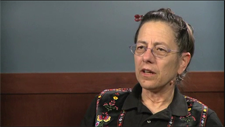 Scientific applications have diverse data and computational needs that scale from desktop to supercomputers. Besides the nature of the application and the domain, the resource needs for the applications also vary over time—as the collaboration and the data collections expand, or when seasonal campaigns are undertaken. Cloud computing offers a scalable, economic, on-demand model well-matched to evolving eScience needs. We will present a suite of science applications that leverage the capabilities of Microsoft’s Windows Azure cloud-computing platform. We will show tools and patterns we have developed to use the cloud effectively for solving problems in environmental science.
Scientific applications have diverse data and computational needs that scale from desktop to supercomputers. Besides the nature of the application and the domain, the resource needs for the applications also vary over time—as the collaboration and the data collections expand, or when seasonal campaigns are undertaken. Cloud computing offers a scalable, economic, on-demand model well-matched to evolving eScience needs. We will present a suite of science applications that leverage the capabilities of Microsoft’s Windows Azure cloud-computing platform. We will show tools and patterns we have developed to use the cloud effectively for solving problems in environmental science.
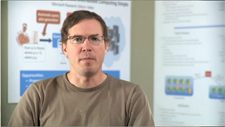 In this demo we showcase efforts in MSR to collaborate with external researchers to explore the application of new technologies, specifically Dryad and DryadLINQ, to big data research problems in science. We also highlight our efforts to provide software and services to academics across the world, through the release of Dryad and DryadLINQ free of charge to the research community, along with associated programming guides, user documentation, and code libraries. Dryad is a general-purpose distributed computing engine, more flexible than MapReduce or Hadoop!, that was designed to simplify the task of implementing distributed applications on clusters of Windows computers. DryadLINQ is an abstraction layer which simplifies the process of implementing Dryad-based applications. Microsoft Research is acutely aware of the ubiquity of big data and the challenges this presents. We are offering researchers the tools, resources and collaboration to explore this new area.
In this demo we showcase efforts in MSR to collaborate with external researchers to explore the application of new technologies, specifically Dryad and DryadLINQ, to big data research problems in science. We also highlight our efforts to provide software and services to academics across the world, through the release of Dryad and DryadLINQ free of charge to the research community, along with associated programming guides, user documentation, and code libraries. Dryad is a general-purpose distributed computing engine, more flexible than MapReduce or Hadoop!, that was designed to simplify the task of implementing distributed applications on clusters of Windows computers. DryadLINQ is an abstraction layer which simplifies the process of implementing Dryad-based applications. Microsoft Research is acutely aware of the ubiquity of big data and the challenges this presents. We are offering researchers the tools, resources and collaboration to explore this new area.
Bing Technology Transfer (opens in new tab)
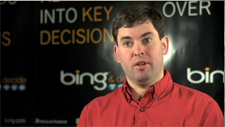 Microsoft Research has contributed numerous technologies to the Bing search engine. Years of research efforts on intensive, data-driven problems have resulted in cutting-edge technology transfers. And Microsoft Research’s ongoing collaborations with Bing product teams continue to evolve the search paradigm.
Microsoft Research has contributed numerous technologies to the Bing search engine. Years of research efforts on intensive, data-driven problems have resulted in cutting-edge technology transfers. And Microsoft Research’s ongoing collaborations with Bing product teams continue to evolve the search paradigm.
Tracking Internet Hosts Using Unreliable IDs (opens in new tab)
![]() Today’s Internet is open and anonymous. While it permits free traffic from any host, attackers that generate malicious traffic typically cannot be held accountable. We will present a system that tracks dynamic bindings between hosts and IP addresses by leveraging application-level data with unreliable IDs. Using a month-long Hotmail user-login trace, we show that this system can attribute most of the activities reliably to the responsible hosts, despite the existence of dynamic IP addresses, proxies, and NATs. With this information, we are able to analyze the host population, to conduct forensic analysis, and to blacklist malicious hosts dynamically.
Today’s Internet is open and anonymous. While it permits free traffic from any host, attackers that generate malicious traffic typically cannot be held accountable. We will present a system that tracks dynamic bindings between hosts and IP addresses by leveraging application-level data with unreliable IDs. Using a month-long Hotmail user-login trace, we show that this system can attribute most of the activities reliably to the responsible hosts, despite the existence of dynamic IP addresses, proxies, and NATs. With this information, we are able to analyze the host population, to conduct forensic analysis, and to blacklist malicious hosts dynamically.
The Translating! Telephone (opens in new tab)
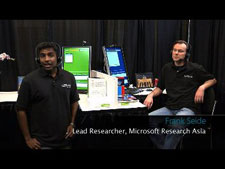 Douglas Adams’ Babelfish inspired dreams of unfettered universal communication. Though we are still far from achieving that goal, there are scenarios in which today’s limited accuracy can create value. Our goal in the telephone-call scenario is to provide an aid for cross-language communication in the event that no other means of communication exists. The system we will show makes extensive use of speaker-adaptation technologies to achieve reasonable, real-time speech-to-text transcription accuracy. This is then translated live using machine translation to provide speech-to-text translation and further fed into a text-to-speech system to realize speech-to-speech translation. The speech-to-text transcript and the translated transcript are shown to the users to enable validation of their intentions.
Douglas Adams’ Babelfish inspired dreams of unfettered universal communication. Though we are still far from achieving that goal, there are scenarios in which today’s limited accuracy can create value. Our goal in the telephone-call scenario is to provide an aid for cross-language communication in the event that no other means of communication exists. The system we will show makes extensive use of speaker-adaptation technologies to achieve reasonable, real-time speech-to-text transcription accuracy. This is then translated live using machine translation to provide speech-to-text translation and further fed into a text-to-speech system to realize speech-to-speech translation. The speech-to-text transcript and the translated transcript are shown to the users to enable validation of their intentions.
Mobile-to-Mobile Networking in 3G Networks (opens in new tab)
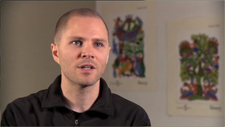 Mobile devices increasingly are first-class computing devices, generating large amounts of data. Searching and sharing data securely across multiple devices can be a significant challenge. We have built Contrail, a communication abstraction for P2P communication on mobile phones. Communication in Contrail is purely asynchronous, coping with the fact that phones temporarily are disconnected from the network. Phones set up filters with other phones expressing their interest set. We will demonstrate the usage of Contrail with three applications: P2P content distribution, P2P search, and location-based group communication.
Mobile devices increasingly are first-class computing devices, generating large amounts of data. Searching and sharing data securely across multiple devices can be a significant challenge. We have built Contrail, a communication abstraction for P2P communication on mobile phones. Communication in Contrail is purely asynchronous, coping with the fact that phones temporarily are disconnected from the network. Phones set up filters with other phones expressing their interest set. We will demonstrate the usage of Contrail with three applications: P2P content distribution, P2P search, and location-based group communication.
New Technologies for Multi-Image Fusion (opens in new tab)
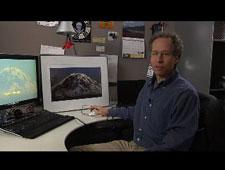 As video and still cameras have become almost ubiquitous, people are taking increasingly more photographs and videos of the world around them. Often, the photographer’s intent is to capture more than what can be seen in a single photograph, and he or she instead takes a large set of images or a video clip to capture a large scene or a moment that extends over time. One can combine these images to produce an output that improves the input images, such as creating an image with a large field of view, a panorama, or a composite image that takes the best parts of the image, a photo montage. But creating these results is still non-trivial for many users. One challenge is in creating large-scale panoramas, for which the capture and stitching times can be long. In addition, when using consumer-level point-and-shoot cameras and camera phones, artifacts such as motion blur appear. Another challenge is combining large image sets from photos or videos to produce results that use the best parts of the images to create an enhanced photograph. We will present several new technologies that advance the state of the art in these areas and create improved user experiences. For panorama generation, we will demonstrate: ICE 2.0. Stitching of panoramas from video. Generating sharp panoramas from blurry videos. For generating composites, we will demonstrate: Video to snapshots. De-noising and sharpening using lucky imaging.
As video and still cameras have become almost ubiquitous, people are taking increasingly more photographs and videos of the world around them. Often, the photographer’s intent is to capture more than what can be seen in a single photograph, and he or she instead takes a large set of images or a video clip to capture a large scene or a moment that extends over time. One can combine these images to produce an output that improves the input images, such as creating an image with a large field of view, a panorama, or a composite image that takes the best parts of the image, a photo montage. But creating these results is still non-trivial for many users. One challenge is in creating large-scale panoramas, for which the capture and stitching times can be long. In addition, when using consumer-level point-and-shoot cameras and camera phones, artifacts such as motion blur appear. Another challenge is combining large image sets from photos or videos to produce results that use the best parts of the images to create an enhanced photograph. We will present several new technologies that advance the state of the art in these areas and create improved user experiences. For panorama generation, we will demonstrate: ICE 2.0. Stitching of panoramas from video. Generating sharp panoramas from blurry videos. For generating composites, we will demonstrate: Video to snapshots. De-noising and sharpening using lucky imaging.
Mobile Assistance Using Infrastructure (MAUI) (opens in new tab)
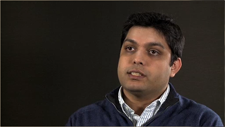 Mobile devices have reached an impasse. Although the resources that can be integrated onto mobile handheld devices will continue to improve, faster CPUs, more RAM, faster wireless NICs, making substantial use of these resources will require a major breakthrough in battery technology. To bypass these limitations, MAUI (Mobile Assistance Using Infrastructure) is a system that enables fine-grained offloading of mobile applications to cloud-based infrastructure. By leveraging nearby infrastructure, MAUI enables a new class of resource-intensive applications, such as augmented reality, to run on mobile handheld devices. With MAUI, we enable resource-intensive .NET applications to run on Windows Mobile smartphones. We will demonstrate: A resource-intensive face-recognition application that consumes an order-of-magnitude less energy. A voice-based translation application that previously could not run using only the limited resources available on today’s smartphones.
Mobile devices have reached an impasse. Although the resources that can be integrated onto mobile handheld devices will continue to improve, faster CPUs, more RAM, faster wireless NICs, making substantial use of these resources will require a major breakthrough in battery technology. To bypass these limitations, MAUI (Mobile Assistance Using Infrastructure) is a system that enables fine-grained offloading of mobile applications to cloud-based infrastructure. By leveraging nearby infrastructure, MAUI enables a new class of resource-intensive applications, such as augmented reality, to run on mobile handheld devices. With MAUI, we enable resource-intensive .NET applications to run on Windows Mobile smartphones. We will demonstrate: A resource-intensive face-recognition application that consumes an order-of-magnitude less energy. A voice-based translation application that previously could not run using only the limited resources available on today’s smartphones.
Greening Corporate Networks with Sleep Proxy (opens in new tab)
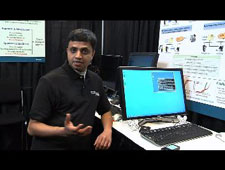 In a corporate network, most desktop machines always are left on, even when they are not in use for extended periods, such as at night. This is wasteful, bad for the environment, and bad for the corporate treasury. While Win7 provides aggressive sleep functionality, most users override it because they occasionally might want to access their machine remotely. Ideally, a desktop would go to sleep when not in use and awaken seamlessly when the user tries to access it. We have built a system to enable this. Our system consists of a sleep server that maintains the network presence of the sleeping machine and seamlessly awakens it on remote access. We do not require special hardware or changes to existing software. Our system is operational in Building 99 and has resulted in substantial savings in terms of money, power consumption, and carbon-dioxide emissions.
In a corporate network, most desktop machines always are left on, even when they are not in use for extended periods, such as at night. This is wasteful, bad for the environment, and bad for the corporate treasury. While Win7 provides aggressive sleep functionality, most users override it because they occasionally might want to access their machine remotely. Ideally, a desktop would go to sleep when not in use and awaken seamlessly when the user tries to access it. We have built a system to enable this. Our system consists of a sleep server that maintains the network presence of the sleeping machine and seamlessly awakens it on remote access. We do not require special hardware or changes to existing software. Our system is operational in Building 99 and has resulted in substantial savings in terms of money, power consumption, and carbon-dioxide emissions.
Manual Deskterity: An Exploration of Simultaneous Pen + Touch Direct Input (opens in new tab)
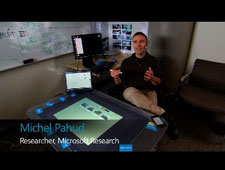 Our research showcases a conceptual model for bimanual input that spans a wide range of form-factors including smart phones, slates, and tabletop systems using a combination of pen, touch, motion sensing, and voice input modalities. The pen writes, the hands manipulate, and the combination of modalities yields new tools – as well as compelling over-the-shoulder playback experiences for human-human communication.
Our research showcases a conceptual model for bimanual input that spans a wide range of form-factors including smart phones, slates, and tabletop systems using a combination of pen, touch, motion sensing, and voice input modalities. The pen writes, the hands manipulate, and the combination of modalities yields new tools – as well as compelling over-the-shoulder playback experiences for human-human communication.
